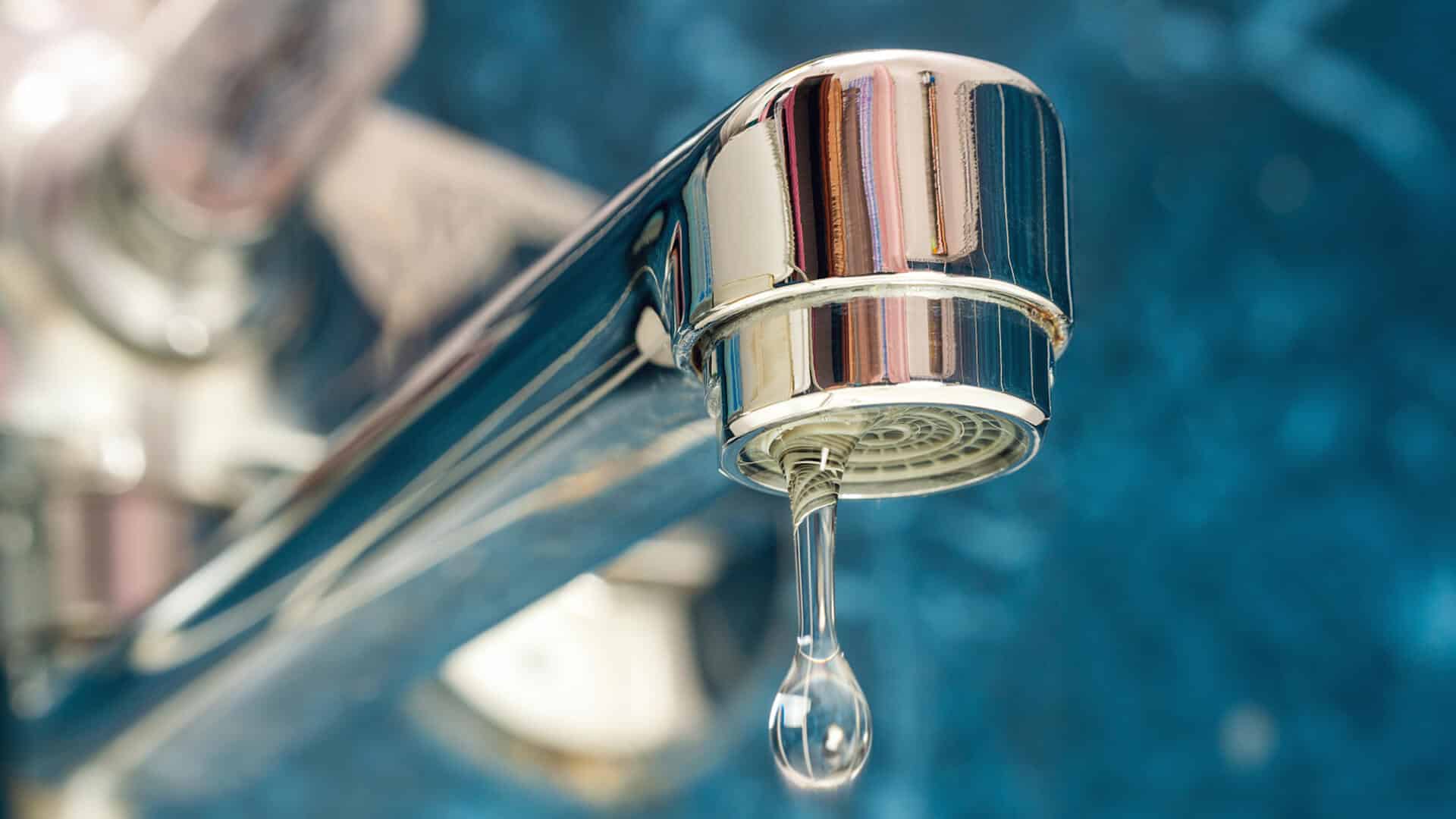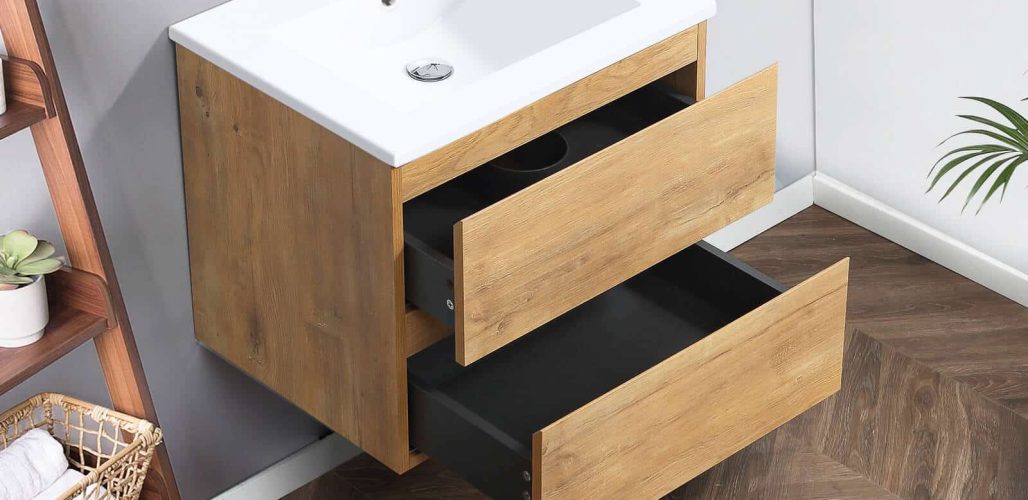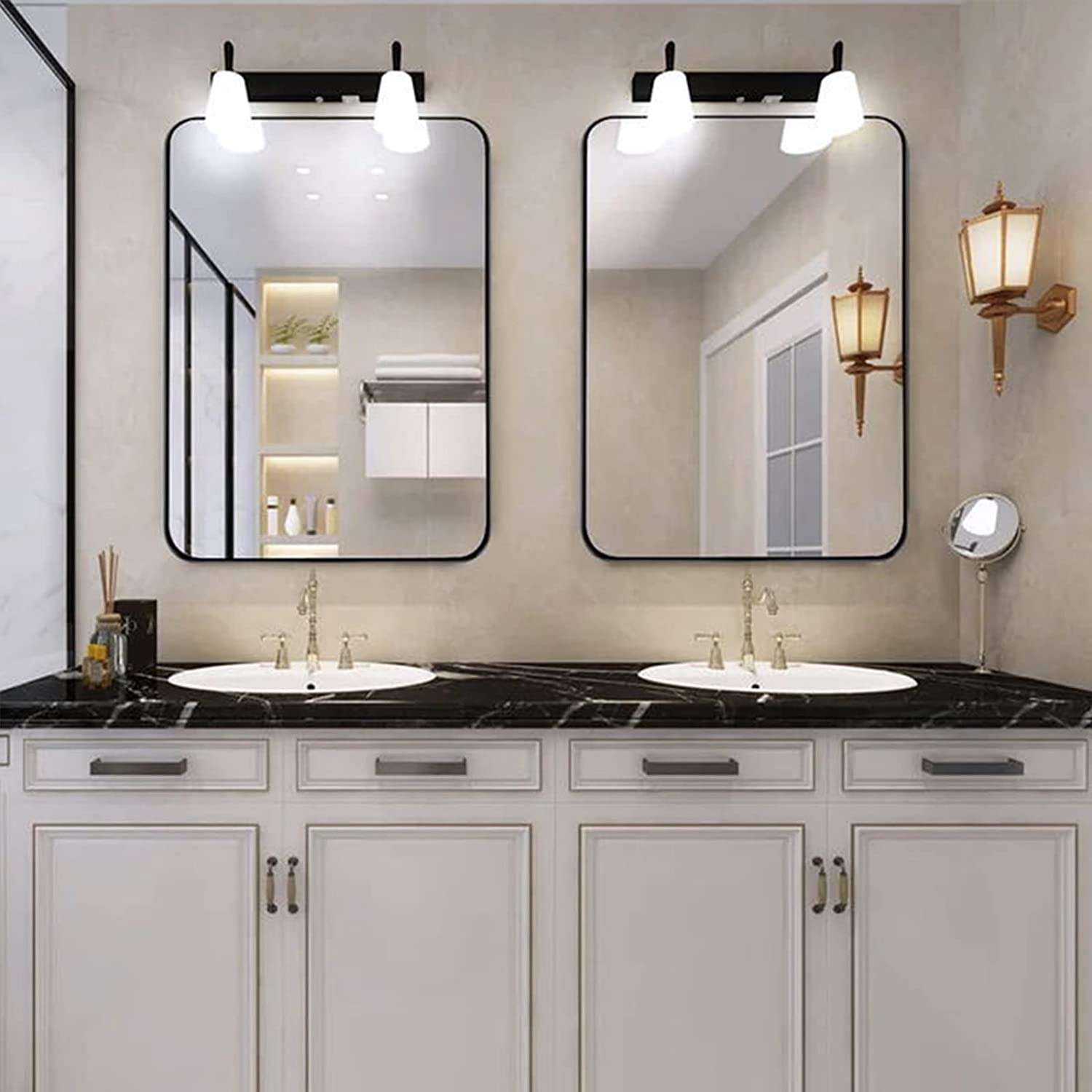
A Step-by-Step Guide to Put an End to that Annoying Drip

A well-designed bathroom holds significant importance in any home, serving not just as a functional space but also as a personal sanctuary where one begins and ends their day.
It promotes comfort and relaxation through a thoughtfully selected color palette and strategically placed fittings, creating an atmosphere of tranquility. The design extends beyond aesthetics, encapsulating efficiency as well, which ensures every inch of the room is utilized optimally, keeping the space clutter-free and easy to navigate. Moreover, your bathroom should act as a canvas for your personal style, allowing you to express your individuality through the choice of tiles, the type of vanity, and other elements.
A well-designed bathroom doesn’t just offer personal benefits but adds substantial value to your home, becoming a key selling point that boosts its appeal to potential buyers. But above all, the design of your bathroom should foster wellness – a space that incorporates natural light, indoor plants, and materials like wood can significantly contribute to a sense of wellbeing. Incorporating elements like a wooden vanity can add a touch of warmth and elegance to your bathroom, reinventing its aesthetic and elevating your everyday routine.
Wood carries a unique aesthetic appeal that transcends time and trends, a natural charm that lends itself to a multitude of design styles. From rustic to contemporary, wood seamlessly finds its place in every aesthetic, owing to its versatility and warmth.
At the core of wood’s aesthetic appeal is its innate connection to nature. The intricate grain patterns, the variety of tones and shades, and the tactile texture of wood all reflect the beauty of the natural world. This natural character creates an inviting atmosphere, adding a sense of comfort and warmth that many other materials cannot match.
Beyond its natural allure, wood offers a myriad of design possibilities. It can be carved, painted, stained, or polished, allowing for an array of finishes that can be tailored to suit your particular design vision. Whether you prefer the rich, dark tones of walnut or the light, airy feel of bamboo, there’s a wood that aligns with your aesthetic preferences.
Selecting the right type of wood for your bathroom vanity is crucial not only for aesthetic purposes but also for durability and longevity. Here are some types of wood you might consider:
1. Oak: Known for its strength and durability, oak is a popular choice for bathroom vanities. It comes in two varieties: red oak, which is known for its reddish tint and wavy grain, and white oak, which is lighter with a straighter grain.
2. Walnut: Walnut is prized for its rich, dark hues and fine grain. It’s durable and resistant to decay, making it an excellent choice for a bathroom vanity that will see daily use.
3. Cherry: Cherished for its smooth grain and reddish-brown color that deepens with age, cherry is a premium choice for vanities. It’s resistant to moisture and decay, but it can be more expensive than other options.
4. Maple: Maple is another solid choice, known for its durability and light color that can range from creamy white to a light reddish-brown. It has a generally straight grain, making it look clean and modern.
5. Bamboo: Bamboo is technically a grass, but it’s often included in discussions about wood due to its similar properties. Bamboo is an eco-friendly option known for its strength and resistance to moisture and warping. It lends a modern, unique look to bathroom vanities.
6. Pine: Pine is a softwood that’s less expensive than most hardwoods. It’s lighter in color, usually featuring shades of white to pale yellow with a hint of brown. Its notable grain gives it a rustic charm, but it’s less resistant to damage and may require more maintenance.
7. Teak: Teak is renowned for its high oil content, strength, and durability. It’s highly resistant to moisture and, therefore, a great choice for bathroom vanities. However, it’s one of the more expensive wood options.
Remember, the type of wood you choose should align with the overall design of your bathroom, your budget, and your long-term needs. With the right type of wood, your bathroom vanity can become a timeless piece that complements your space and serves you for years to come.
When it comes to selecting the perfect wood bathroom vanity, size is a crucial factor to consider. An ill-fitting vanity can disrupt the balance and functionality of your bathroom. Here are some important size considerations:
1. Width: The width of your vanity should align with the size of your bathroom. For smaller spaces, consider a slim, single-sink vanity. If your bathroom is more spacious, a double-sink vanity may be more appropriate. It’s essential to measure your space before making a decision to ensure your vanity fits comfortably without obstructing doorways or other fixtures.
2. Depth: Depth is often overlooked, but it’s just as important. A vanity that’s too deep can make a small bathroom feel cramped. Standard bathroom vanities are about 21 inches deep, but if you’re working with limited space, you might want to consider a narrow vanity with reduced depth.
3. Height: The height of your vanity should be comfortable for everyday use. The standard vanity height is around 32 to 36 inches from the floor. However, comfort height vanities are becoming more popular and stand about 36 to 39 inches tall. Consider who will be using the vanity and choose a height that accommodates them best.
4. Storage Needs: The size of your vanity will also dictate your storage capacity. If you have a lot of items to store in your bathroom, you may want to opt for a larger vanity with plenty of drawers or cupboard space. If your storage needs are minimal, a smaller, more streamlined vanity might be suitable.
5. Proportions: The vanity should be proportional to other elements in the room. It should not overpower the space or, conversely, get lost in it. Balance is key in design, so consider the size of your vanity relative to your bathroom’s overall size.
Remember, the goal is to find a balance between aesthetic appeal and functionality. By carefully considering the size of your vanity, you can enhance the look of your bathroom while ensuring it meets your practical needs.
Wood is a versatile material that can be tailored to fit a multitude of design preferences, with an array of color and finish options to choose from. Here are some considerations:
1. Color: The natural color of wood varies greatly depending on the species, ranging from the pale blond of maple to the deep brown of walnut. You can further customize the color with stains or paints. You might opt for a light color to create a fresh, airy feel or a dark tone for a rich, cozy ambiance. The color should complement the overall color scheme of your bathroom.
2. Stain: Staining is a common way to alter the color of your wood vanity while maintaining the natural grain visible. Stains come in a variety of shades and can enhance the wood’s natural beauty or transform its appearance to better fit your aesthetic.
3. Paint: Painting is another way to customize your vanity. While it hides the wood’s natural grain, it provides a uniform color and can be a good choice if you prefer a specific color that isn’t achievable with stain. Chalk paint can create a vintage, shabby chic look, while high-gloss paint can give a modern, sleek appearance.
4. Finish: After staining or painting, a finish is applied to protect the wood and enhance its appearance. Clear finishes, like varnish or lacquer, protect the wood while showcasing its natural beauty. For a rustic look, you might opt for a distressed finish. For a modern appeal, a high-gloss finish may be suitable.
5. Hardware: The color and finish of the hardware can also significantly impact your vanity’s overall look. Brushed nickel or chrome can provide a sleek, modern look, while oil-rubbed bronze or brass can lend a more traditional or vintage feel.
Incorporating a new wooden vanity into your current bathroom design requires thoughtful consideration to ensure a seamless blend with your existing aesthetic. Here are a few pointers:
1. Complement Existing Colors: Consider the current color scheme in your bathroom. The wood vanity should either match or complement these colors. For instance, if your bathroom has cool-toned tiles or paint, a vanity with a cool-toned stain might work best.
2. Match Your Style: Your new vanity should echo the style of your bathroom. If you have a modern bathroom, consider a sleek, minimalistic design in a dark stain or paint. For a rustic or farmhouse-style bathroom, a distressed finish or natural wood could be more appropriate.
3. Consider the Fixtures: Look at your current fixtures, such as taps, lights, and handles. Your vanity’s hardware should match or coordinate with these fixtures. For example, if your bathroom fixtures are brushed nickel, you might choose matching handles for your vanity.
4. Balance Your Space: If your bathroom is spacious, a larger vanity can act as a statement piece. In a smaller bathroom, a more compact, streamlined vanity will maintain balance without overwhelming the space.
5. Functionality: Consider your current bathroom’s functionality and storage needs. If you’re lacking storage, a vanity with plenty of drawers or shelves can help address this issue. If the room feels cramped, a vanity with open shelving can maintain a sense of space.
6. Material Mix: The wooden vanity should harmonize with the other materials in your bathroom. Wood pairs well with many materials like marble, ceramic, and glass, adding a natural touch to the mix.
Wood bathroom vanities can add a touch of elegance and warmth to your bathroom, but they require proper care to keep them looking beautiful and to prolong their lifespan, especially considering the high-moisture environment.
1. Regular Cleaning: The first step to keeping your vanity looking new is routine cleaning. Use a soft, damp cloth and a gentle cleaner to remove dust and dirt. Avoid harsh chemicals or abrasive materials that could damage the wood or its finish.
2. Avoid Excess Moisture: Bathrooms are naturally moist environments, but excess water can damage your wood vanity over time. Wipe up any water spills immediately, and consider using a dehumidifier if your bathroom tends to be particularly humid.
3. Use Protective Products: Specialized wood care products can help maintain the vanity’s appearance. Wood oils or polishes can keep the surface glossy and new, while wood conditioners can prevent dryness and cracking. Remember to always test these products on a small, hidden area first to ensure they won’t discolor or damage the wood.
4. Protect from Sunlight: Prolonged exposure to sunlight can fade the color of the wood over time. If your vanity is near a window, use curtains or blinds to protect it from direct sunlight.
5. Routine Maintenance: Regularly check the vanity for any signs of damage or wear, such as small scratches or loose knobs. Address these issues promptly to prevent them from worsening over time.
6. Refresh the Finish: Over time, the finish on your wood vanity can wear away, making it look dull or exposing the wood to potential water damage. Consider having the vanity refinished every few years to keep it looking its best.
1. Regular Dusting: Use a soft, dry cloth or a microfiber duster to dust your vanity regularly. This prevents the buildup of dust particles that could scratch the surface of the wood over time.
2. Gentle Cleaning: Avoid using harsh chemicals or abrasive cleaners. Instead, opt for a mild soap or a cleaner specifically designed for wood. Mix it with warm water and use a soft cloth to clean the surface of the vanity.
3. Immediate Spill Cleanup: Bathroom vanities are susceptible to water spills and moisture. Always clean up any spills immediately to prevent water damage to the wood. Use a dry cloth to absorb the liquid, then wipe the area with a damp cloth and dry it completely.
4. Avoid Excess Water: When cleaning, be sure not to oversaturate the wood. Excess water can seep into the wood, causing it to swell, warp, or discolor. Always wring out your cloth thoroughly before wiping the vanity, and dry the surface immediately after cleaning.
5. Protective Products: Use a good-quality furniture polish or wax to protect the finish of your wooden vanity. Apply according to the product’s instructions, typically once every few months.
6. Periodic Deep Cleaning: Over time, grime can build up on your vanity, particularly around the handles and in corners. Use a soft toothbrush and your mild cleaning solution to gently scrub these areas, then wipe clean and dry thoroughly.
Sealing your wooden bathroom vanity is crucial due to the typically high-moisture environment. This process protects the wood from potential water damage, such as warping, swelling, or rotting, and helps maintain the vanity’s beauty and structural integrity over time.
Unsealed wood absorbs water, which can lead to various problems. The wood may warp as it swells and shrinks unevenly. Prolonged exposure to water may also cause the wood to rot, which weakens it structurally and can lead to an unpleasant smell. Furthermore, water exposure can cause the finish to peel or become cloudy, ruining the vanity’s appearance.
Sealing the wood effectively creates a barrier that prevents water from penetrating. It not only protects the wood itself but also helps maintain the appearance of the finish. Many sealants will also enhance the natural beauty of the wood, accentuating its color and grain pattern.
There are various types of sealants available, each with its own set of benefits. Some popular options for bathroom vanities include polyurethane, varnish, and lacquer. Polyurethane is highly durable and available in a range of sheens, varnish enhances the natural beauty of the wood, and lacquer provides a hard, durable finish.
Despite the importance of sealing, it’s also vital to maintain good bathroom ventilation. An extractor fan or open window can help reduce the overall humidity levels, making the environment less challenging for your wooden vanity.
In conclusion, a wooden vanity is more than just a functional piece of furniture – it’s a statement piece that can elevate your bathroom design and make your daily routines more enjoyable. As you embark on your journey to find the perfect wooden vanity, remember to take your time, consider all your options, and think about how the vanity will fit into your lifestyle. By doing so, you can transform your bathroom into a space that not only meets your practical needs but also reflects your personal style and taste.

A Step-by-Step Guide to Put an End to that Annoying Drip

Unveiling the secrets to selecting the perfect mirror for your bathroom vanity, this comprehensive guide navigates through the critical factors of functionality, illumination, and design style.

Introduction Bathroom mirrors are fundamental elements of any home décor, but when integrated with lighting, they redefine aesthetics and functionality.
You’ll be the first to hear about new arrivals, trends, exclusive offers, clearance & more when you subscribe to Kgarmall